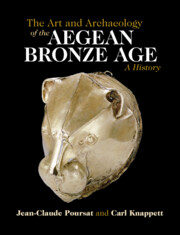Book contents
- The Art and Archaeology of the Aegean Bronze Age
- The Art and Archaeology of the Aegean Bronze Age
- Copyright page
- Contents
- Figures
- Introduction
- Part I Aegean Neolithic Art
- Part II The Art of the Aegean Early Bronze Age
- Chapter 6 Artefacts and Contexts
- Chapter 7 Architecture
- Chapter 8 Early Bronze Age Aegean Glyptic
- Chapter 9 Sculpture
- Chapter 10 Stone Vases, Metalware, and Miscellaneous
- Chapter 11 Early Bronze Age Pottery in the Aegean
- Part III Aegean Art in the Cretan First Palace Period
- Part IV Aegean Art in the Second Palace Period
- Part V Aegean Art in the Cretan Second Palace Period
- Part VI Aegean Art in the Final Palatial Period of Knossos
- Part VII Aegean Art of the Mainland Mycenaean Palatial Period
- Part VIII Aegean Art at the End of the Bronze Age
- Afterword Aegean Art Through Forgers’ Eyes
- References
- Index
- Plate Section (PDF Only)
- References
Chapter 6 - Artefacts and Contexts
from Part II - The Art of the Aegean Early Bronze Age
Published online by Cambridge University Press: 19 May 2022
- The Art and Archaeology of the Aegean Bronze Age
- The Art and Archaeology of the Aegean Bronze Age
- Copyright page
- Contents
- Figures
- Introduction
- Part I Aegean Neolithic Art
- Part II The Art of the Aegean Early Bronze Age
- Chapter 6 Artefacts and Contexts
- Chapter 7 Architecture
- Chapter 8 Early Bronze Age Aegean Glyptic
- Chapter 9 Sculpture
- Chapter 10 Stone Vases, Metalware, and Miscellaneous
- Chapter 11 Early Bronze Age Pottery in the Aegean
- Part III Aegean Art in the Cretan First Palace Period
- Part IV Aegean Art in the Second Palace Period
- Part V Aegean Art in the Cretan Second Palace Period
- Part VI Aegean Art in the Final Palatial Period of Knossos
- Part VII Aegean Art of the Mainland Mycenaean Palatial Period
- Part VIII Aegean Art at the End of the Bronze Age
- Afterword Aegean Art Through Forgers’ Eyes
- References
- Index
- Plate Section (PDF Only)
- References
Summary
The transition from the Neolithic to the beginning of the Early Bronze Age (EBA) does not see any major change in lifeways. Pottery and other forms of material culture carry on largely as before. The only significant development is in metallurgy, though it had already appeared in the Late Neolithic; and even here progress is somewhat slow, the east Aegean excepted.
Though regional differences were hardly weak in the Neolithic, they do nevertheless intensify from the start of the Bronze Age. Three regions clearly assert their identity – the Peloponnese, the Cyclades, and Crete – through particular characteristics in their architecture, funerary customs, pottery, and figurines. Chronological schemes use the common tripartite divisions (Early Bronze (EB) I, II, and III) but adopt separate terminologies according to region (Early Helladic (EH), Early Cycladic (EC), Early Minoan). The term ‘Early Bronze Age’, without further specification, is used in more peripheral areas such as northern Greece and the northeast Aegean islands.
- Type
- Chapter
- Information
- The Art and Archaeology of the Aegean Bronze AgeA History, pp. 35 - 38Publisher: Cambridge University PressPrint publication year: 2022

